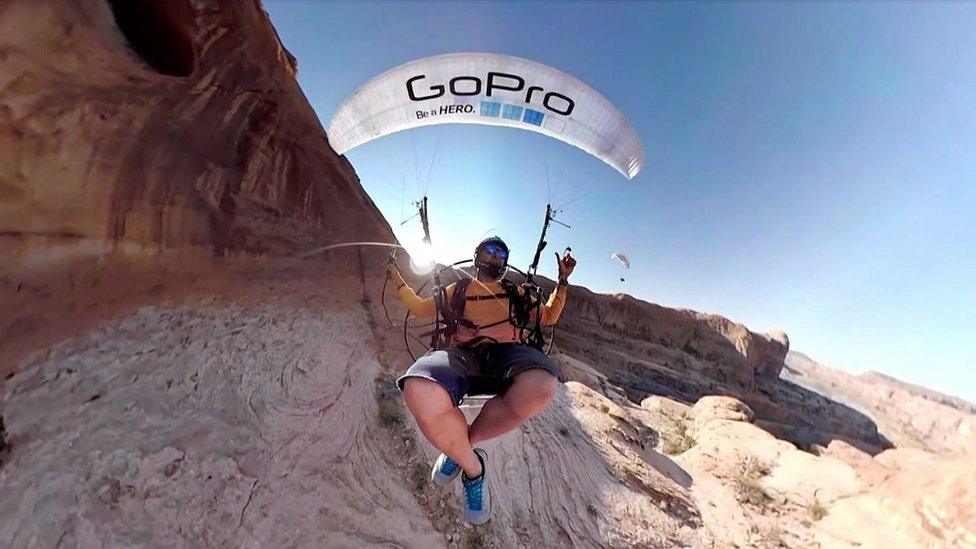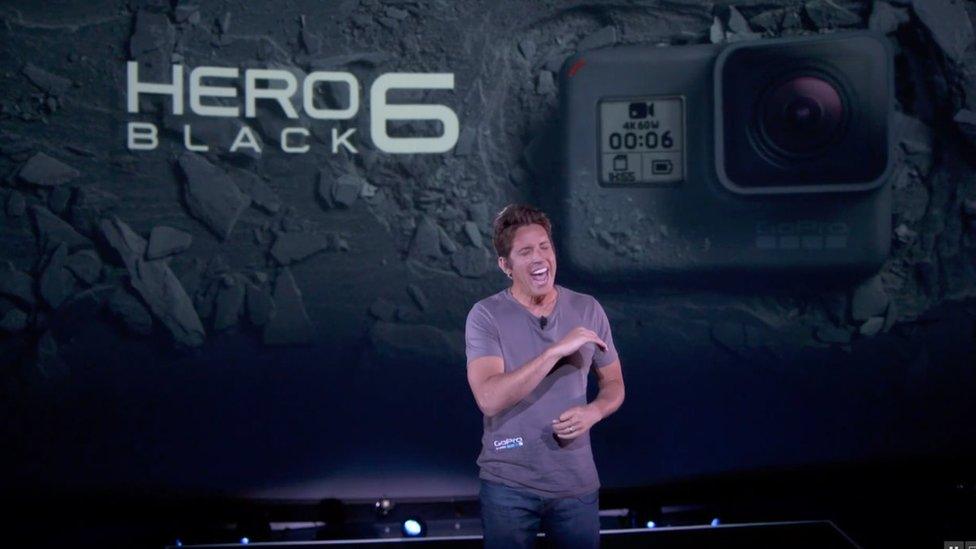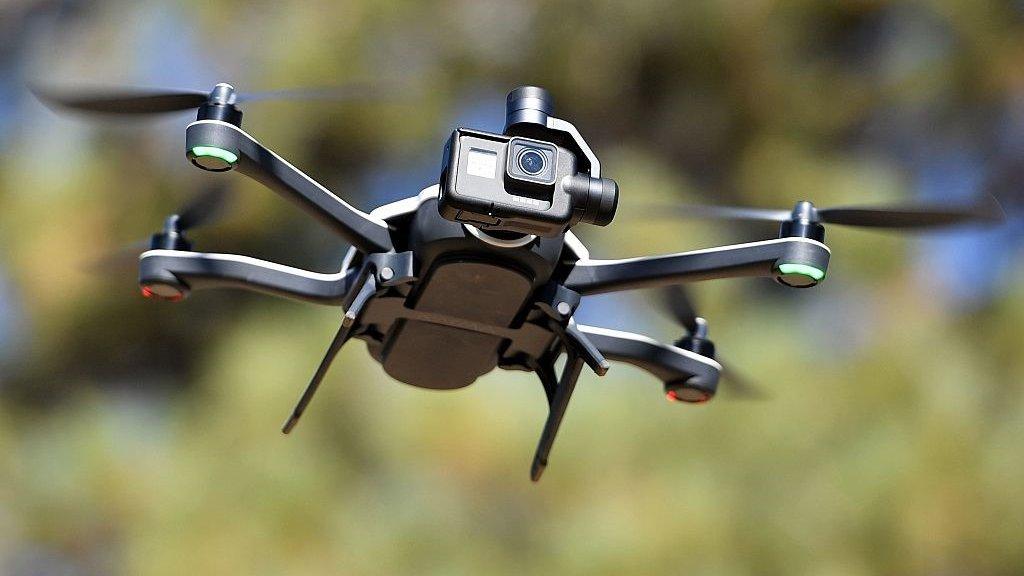GoPro Fusion aims to take 360-degree video mainstream
- Published

The Fusion uses two lenses to create a 360-degree view of the world around it
Action camera specialist GoPro has announced its first model to take 360-degree videos and photos.
The Fusion also features built-in image stabilisation, spatial audio capture and can be used underwater.
The US company is in need of a hit product - it posted a net loss for each of its past seven financial quarters creating a total deficit of $506m (£376m).
However, it still had close to $150m in cash reserves, external as of August.
"The problem has been weak sales coupled with heavy research and development spending to revive the brand and reinvigorate growth," Michael Pachter, managing director of equity research at financial services firm Wedbush Securities, told the BBC.
"If the new products don't work, they will have to trim spending.
"I am not worried about their survival... but remain sceptical that they can grow revenues with these products."
Angel view footage
GoPro offered a high-end spherical video rig in the past called the Omni, which stitched together images from six of its cameras. But it cost $4,999, putting it far beyond the reach of most consumers.
The firm began teasing a mass market alternative as far back as January 2016, but took until now to announce its release.

The GoPro Fusion is bigger than one of the firm's standard action cameras, but it says it still fits in a pocket
The Fusion will cost $699 when it goes on sale in November, making it about 40% more expensive than the company's flagship action camera.
The device has two lenses - one on either side of its body - and is capable of:
filming 360-degree footage in 5.2K resolution at 30 frames per second, and 3K resolution at 60fps
working in water at depths of up to 5m (16ft)
accepting voice commands in 10 languages
providing automatic digital stabilisation, which the company claims comes close to the level you would expect from using a separate mechanical gimbal
Several filming modes were shown off at the San Francisco launch.
They included Overcapture, which allows the owner to film a spherical scene and then play it back while moving the camera about to determine what perspective is seen in the final footage. This allows users to create a traditional-looking clip in which they can prevent the action drifting out of view.

Angel View captures footage that appears to be filmed from a camera floating in front of the user
Another mode - Angel View - involves mounting the camera on an extension pole that projects from the user's body. In the final footage the pole is not seen and the camera appears to have drifted in front of the person.
The demo was in part an attempt to demonstrate uses for spherical video beyond playback in a virtual reality headset or interactive video, which have proved to have limited appeal.
GoPro's chief executive Nick Woodman described Fusion as being a "revolutionary" product adding it was "the first of its kind". But it enters an increasingly crowded market for spherical cameras.
Earlier this year, Garmin announced the Virb 360, which offers many of the same features, external but with the opportunity to capture higher resolution images.

Several other manufacturers already sell high-resolution 360-degree cameras
Other alternatives include the Ricoh's Theta V, the Nikon KeyMission 360 and the Insta360 One - a smartphone add-on that offers an unusual bullet time mode inspired by the Matrix movies.
"What would be revolutionary about the Fusion is if it manages to bring 360-degree cameras into the mainstream of consumer technology," commented Rob Leedham, editor of Stuff magazine.
"I think it will prove a hard sell, because how many people spend £700 on a camera these days, let alone one that specialises in 360-degree footage."
Smoother video
GoPro also announced the latest generation of its core action camera - the Hero6 Black - which it said features a custom processor.
The device now allows 4K video to be shot at 60 frames per second and has better stabilisation than the previous version.

GoPro's Nick Woodman said the Hero6 Black offers better in-body stabilisation than any of its earlier cameras
"Those features will appeal to GoPro's core audience even if the camera is an incremental upgrade," commented Mr Leedham.
In addition, the company also announced a software upgrade for its Karma drone that will allow it to automatically follow the person holding its controller, keeping them in shot.
Several rival drones, including DJI's Mavic Pro, have offered a similar facility for some time.
- Published30 November 2016

- Published20 September 2016